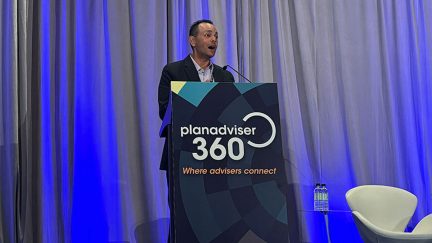Never miss a story — sign up for PLANADVISER newsletters to keep up on the latest retirement plan adviser news.
Study Paints Detailed Portrait of Fortune 100 DC Plans
The study was based on data in accounting reports attached to Form 5500 filings for the largest DC plans in 2009. Among the 97 Fortune 100 companies in the study, net revenue was at least $24.5 billion and DC plan assets averaged roughly $5 billion. These plans held approximately $522 billion in total DC plan assets in 2009, with aggregate plan assets growing by 21% during the year , with most of the growth attributable to investment gains
Towers Watson highlighted these findings:
- Most employers do not require employees to meet age and service eligibility requirements to participate in their DC plans. However, employees typically must meet a service requirement for non-matching contributions to fully vest. Seventy-five percent of the companies did not require employees to be a certain age to participate. The eligibility for the other 25% was either 18 or 21 years old. Sixty-five percent of these companies had no service requirements for DC plan participation.
- The majority of companies did not require employees to meet age or service requirements to participate in their DC plans. While 46% of companies had no service condition, 23% required one year of service before providing employer contributions.
- In a majority of companies, employer matching contributions to DC plans vested immediately. Three-year cliff vesting was also common, as was a graded vesting schedule that begins during the second year of service and continues for another one to four years, typically ending with the fifth year.
- Matching contributions vested immediately in 54% of these companies. Of the others, 33% imposed cliff vesting and 13% applied a graded vesting schedule over two to five years of service.
- In 2009, total contributions (matching plus non-matching) averaged 5.3% of pay, while the median was 5% of pay.
- While the vast majority of these companies — 86% — did not suspend or decrease their plan match due to financial difficulties, 8% reduced it and 6% suspended it.
- Of companies that made their match in company stock, all but two allowed employees to diversify out of the company stock match immediately. One plan allowed diversification according to the plan’s vesting rules, and the other allowed diversification at the next valuation date.
- These Fortune 100 companies’ DC plans offered from six to 61 investment options, with a median of 16.
(Cont...)
Employer Stock Holdings
Between 2008 and 2009, the overall percentage of net plan assets invested in employer stock declined slightly among DC plans with employer stock, according to the Towers Watson analysis. Eighty-six percent of all plans sponsored by publicly-traded companies included some employer stock in their asset allocation. Five of the 97 companies in the analysis had no publicly traded stock.
At the plan level, the percentage of plan assets invested in employer stock varied. Of DC plans that maintained company stock, 35% held less than 10% of plan assets in employer stock at year-end 2009, and 19% held between 10% and 20%. The majority of DC plans with company stock — roughly 80% — invested less than 30% of their assets in company stock during 2009.
The number of plans with relatively low allocations to company stock increased between 2008 and 2009. In 2008, 29% of DC plans had less than 10% of plan assets invested in company stock, and in 2009, the percentage rose to 35%.
You Might Also Like:

Plan Sponsors Remain Focused on Workforce Retirement Benefits

How to Establish Better Decumulation Options for Future DC Plans




